The markers that identify the boundaries of the label’s surface area — techno, ambient, musiqué concrete — are on display, and the terrain inside them is mapped and signposted with the selection of twelve tracks spanning the last twenty years of releases.
Raster-Noton have, in their own words, always tried to be more than a record label. “It was a high-brow statement not to call a newly founded label a ‘label’, but an ‘archive’ instead,” Carsten Nicolai relates in the interview with journalist Max Dax that opens Source Book 1. As an “archive for sound and not-sound,” it makes sense that Nicolai and his partner label-heads Frank Brechtschneider and Olaf Bender have been expanding the boundaries of what record labels can be since they joined forces in 1999. Given that charter, and the self-professed “high-brow” nature of their ambition, the artifact under examination here makes a certain amount of sense. It’s a limited run, large coffee-table volume and accompanying audio release, bound in a way that will permit expansions to be inserted in the future.
While I did not get a physical copy of the tome to review, based on the press kit, it looks beautiful and absolutely on brand for Raster-Noton. Most items get their own two-page spread, with an artfully composed photograph of the artifact itself on the left and the catalog details on the facing page. A few releases get special treatment; “document 1,” catalog number r-n 100, was a book and accompanying CD that detailed the 2007 multi-artist tour of Japan. In a quirky fractal meta-reference, a pair of two-page spreads from that book are photographed against a plain white background and reproduced inside this book. The text for the audio releases simply reproduce the tracklisting, credits, and release date/availability; one would hope for a little bit of color text or editorial commentary on the releases.
As a survey of Raster-Noton’s output, the audio compilation does an admirable job. The markers that identify the boundaries of the label’s surface area — techno, ambient, musiqué concrete — are on display, and the terrain inside them is mapped and signposted with the selection of twelve tracks spanning the last twenty years of releases.
Kangding Ray and Emptyset lead off with a pair of dark electronic workouts. The former, “silver (pruitt igoe prototype),” clatters and rattles menacingly under a sizzling bass throb, while Emptyset’s “Augur” takes a page from the opening white-noise blasts of Autechre’s classic “Second Bad Vilbel,” stretched out to song length and overlaid with a competing mechanical surge. Grischa Lichtenberger’s cryptically-titled “0514_01 re 0809_20 1 barrg b” brings us back to the mid-2000s and the heydey of minimal “schafel” techno a’la Perlon or Kompakt; it’s a short piece that doesn’t develop much over three minutes, but that was never the point of this style.
Moving on, Raster founder Carsten Nicolai, under his primary alias Alva Noto, appears on “milan (for kostas murkudis)” contrasts icy synthesized drums against a soft, nearly formant chordal swell. “nisansala” by Anne-James Chaton consists of micro-sliced vocal snippets just under the horizon of intelligibility layered over a giant one-note bass hit and kick drum. Label boss Brechtschneider turns up for a maschinefunk number called “thermik” and Senking (whose Trial was one of my first exposures to the label) presents “lug,” an atypically subdued slow burner which toys with brooding trip-hop beats. The third member of the founding triad, Olaf Bender as Byetone, returns to the isolationist, mechanical aesthetic with “postpostrefabricated,” which feels closer to Eno-esque “systems music” than anything humans would recognize as a “song.”
Atom™, aka Uwe Schmidt, one of the planet’s most prolific electronic producers and a recurring Raster artist, is up next with “flimmern,”, which whirs like a passing helicopter before emerging into dub-techno territory. Horror-movie strings swell and morph into metallic stabs, then recede into the distance. Extending the concept, Robert Lippok’s “textured” also references dub with big, echoplexed drum hits and driving subsonics. Two experimental tracks from Japanese producers round out the compilation: the title of Kyoka’s “side to side (live rec version)” presumably references the extreme ping-pong stereo effect that its main percussive loop demonstrates, while Ueno Masaaki brings a fierce, glitchy buzz with “building rain (prototype)”.
The audio is a fine Raster-Noton compilation but the real draw here is the printed matter. And at €80, 400 pages and 3 kilos inside its slipcase, Source Book 1 is not for the casual aficionado, but the collector or completest will find it essential.
Source Book 1 is available now via Kompakt.fm.






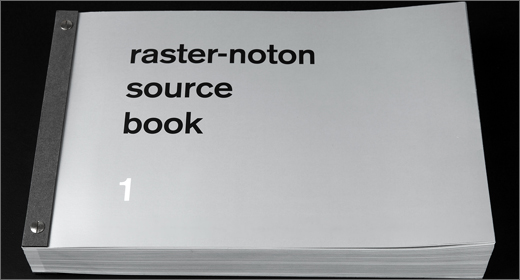
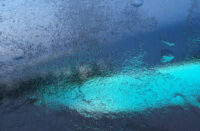
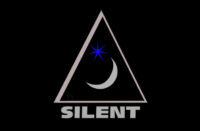


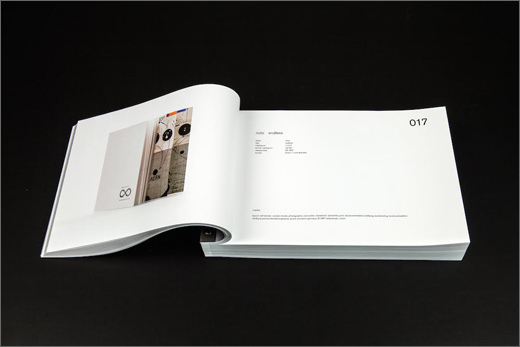

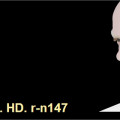



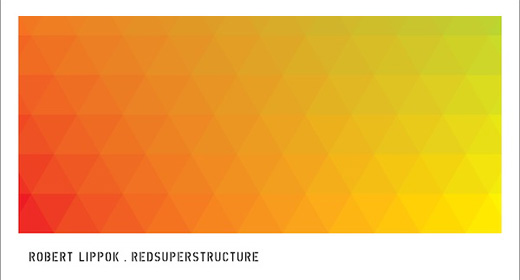


![Pole :: Tempus Remixes (Mute) — [concise]](https://igloomag.com/wp/wp-content/uploads/2025/04/pole-tempus-remixes_feat-75x75.jpg)






![Hasbeen :: Bunker Symphonies II (Clean Error) — [concise]](https://igloomag.com/wp/wp-content/uploads/2025/04/hasbeen-bunker-symphonies-ii_feat-75x75.jpg)
